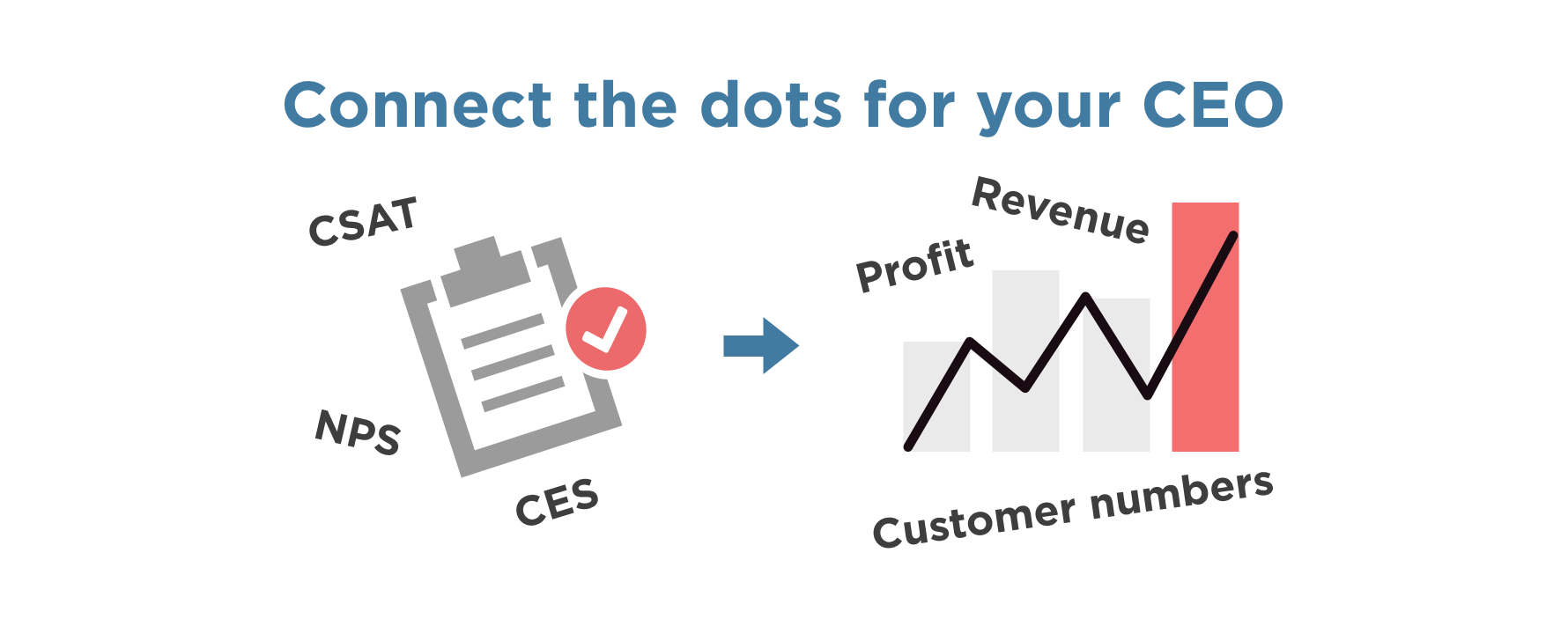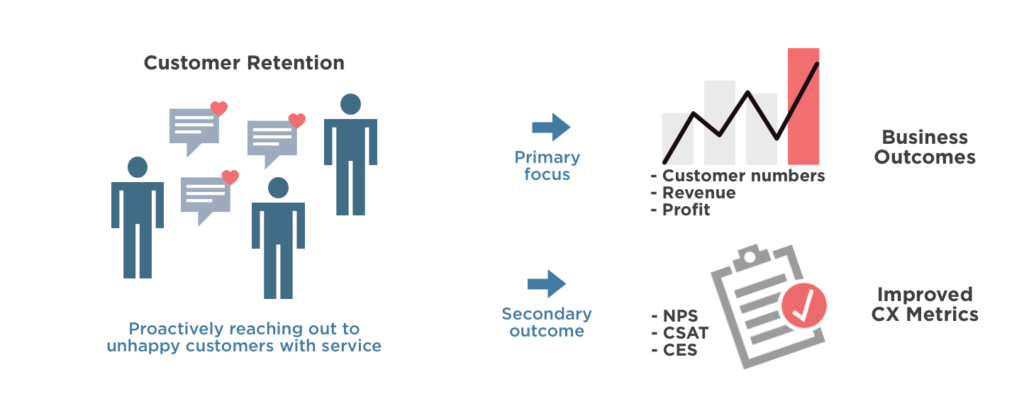CX executives use traditional metrics to report the performance of marketing initiatives — but are these the numbers the CEO wants?
The old way: Justify CX initiatives using traditional CX metrics
Each year, CX executives submit budget requests for their prefered CX initiatives for the coming year. In justifying these requests, they refer to performance improvements to customer satisfaction (CSAT), net promoter score (NPS), reduced customer effort score (CES) or whatever other CX metrics their company favours.
Whilst the CX executives are focused on CX metrics, the CEO and C-suite are more interested in top-level business outcomes like revenue, customer numbers and improved profitability. The link between CX metrics and business outcomes is often not so straightforward or obvious.
Old result: Your CEO doesn’t see the benefit of CX initiatives
When the budget gets handed down, projects that directly impact the business outcomes are at the head of the queue and your CX initiative misses out. To connect your CX metrics to business outcomes, your CEO needs to connect too many dots (see diagram below).
We know that CX initiatives that improve NPS, customer satisfaction or reduce customer effort, are good for business. Let’s consider an example of a CX initiative: What if we had an initiative that would improve the customer onboarding process to make it easier for new customers. The expected outcome is that we will reduce customer effort and improve new customer satisfaction.
We know that improving the onboarding process will increase new customer satisfaction which will lead to happier customers, who will spend more and be loyal and loyal customers improve customer lifetime value which relates to business outcomes like increased revenue and customer numbers, but that is quite a few dots for your CEO to connect.
The new way: focus on initiatives with direct business outcomes
This approach reminds me of the English proverb “Take care of the pennies and the pounds will take care of themselves“. We select a business outcome that delivers on the CEO metrics and where the CX metrics will be improved as well. The particular metric to do that is customer retention. Customer retention increases customer numbers and retains revenue. When you retain more customers you don’t need to spend as much on customer acquisition or replacement which and reduces costs and improves profitability as well.
There are many tools available to help you identify individual customers who are at risk of leaving. Once you know who is likely to leave, you step in to retain them. The retention activity is a proactive service communication to each unhappy customer asking if they need assistance and providing them with an opportunity to raise any issues or problems they are experiencing.
This approach retains customers delivering customer number targets, retaining revenue and hitting the business outcome targets for the CEO and C-suite.
New Result: when you focus on customer retention your initiatives are funded
New result – the CEO will like it and you get your money for projects where the outcome is customer retention. The interesting by-product of an effective customer retention program is that you are actively identifying unhappy customers and helping them which improves the health of your customer base. The result will be you end up improving your CX metrics as you create happy customers.
When you focus on customer numbers and retained revenue through customer retention, you are focused on exactly the numbers your CEO cares about.
Rather than focusing on one of the traditional metrics which hopefully leads to improved business outcomes, you should turn your attention to customer retention which will deliver on the CEO’s preferred metrics.
When you work on customer retention through proactive service, you end up with happy customers. As we know, the benefit of happy customers is not just that they don’t leave you. Happy customers don’t complain as much, if at all, they cost less to service, they are less price-sensitive, and they tell their friends about you. All these things reflect positively in traditional CX metrics too.
Unique Useful Insight (UUI)
We know it’s important to speak the same language to be heard, so when you focus on the metrics your CEO cares about, your CX initiatives will be prioritised. Customer Retention is the CX metric that will deliver for your CEO and improve your traditional CX metrics too.
More reading here:
Do your CX metrics translate to the financial metrics your CEO needs? For metrics your CEO cares about, check out the marketing calculator.
See the Forrester article:
There’s Just One CX Metric That Matters To Your C-Suite — But You’re Not Reporting It
We at SmartMeasures are helping our clients create CX initiatives with measurable business outcomes that connect to the numbers the CEO loves.
If you would like to know more, get in touch.




